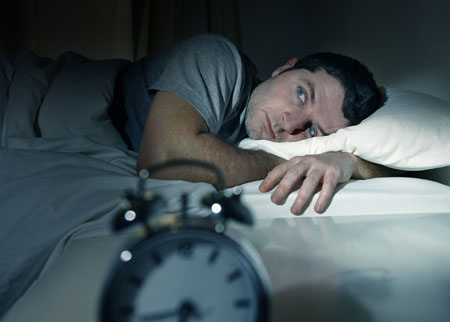Cannabidiol (CBD) does not make cannabis safer
Amir Englund et al reported in Neuropsychopharmacology in A randomised, double-blind, cross-over trial of cannabis with four different CBD:THC ratios that CBD did not protect against the adverse effect of THC. These included impaired delayed verbal recall ( p?=?0.001) and induced positive psychotic symptoms on the PANSS ( p?=?2.41?×?10–5).
Editors Note: Not only does marijuana impair memory, it is a risk factor the onset of bipolar disorder and schizophrenia. When pot is used by a person with a unipolar or bipolar mood disorder, there are increases in depression and anxiety and an overall less favorable course of illness. If a person with a mood disorder uses heavy amounts of marijuana, they could consider buying N-acetylcysteine (NAC) 500mg and increasing the dose to 1,000mg twice a day within a week as this has been shown to decrease drug use compared to placebo in adolescents and young adults using and abusing pot. Most people who sell pot, are not well-informed about its dangers and just want to make money.
Adolescent Delta-9-tetrahydrocannabinol induces long-term neuronal disturbances in dorsal vs. ventral hippocampus
De Felice et al reported in Neuropsychopharmacology (2022) how adolescent THC exposure in a rodent model can induce significant morphological disturbances and glutamatergic signaling abnormalities in the hippocampus. The dorsal hippocampus is critical for cognitive and contextual processing, whereas the ventral region is critical for affective and emotional processing. Adolescent THC exposure induces long-lasting memory deficits and anxiety like-behaviors concomitant with a wide range of differential molecular and neuronal abnormalities in dorsal vs. ventral hippocampal regions.
Editors Note: While these data are in rodents, they provide insights into how THC use in adolescents exerts memory deficits and anxiety-like behavior in adulthood by dysregulation of glutamate signaling in the hippocampus. These data converge with data in humans. The bottom line is: use of marijuana in adolescence is not good for brain function, cognition, and behavior in adulthood.
PREVENT EPISODES, PROTECT YOUR BRAIN, BODY, AND SELF
Kessing and Andersen 2017 wrote:”Overall, increasing number of affective episodes seemsto be associated with:(i) increasing risk of recurrence, (ii) increasing duration of episodes, (iii) increasing symptomatic severity of episodes,(iv) decreasing threshold for developing episodes, and (v) increasing risk of developing dementia.
Conclusion: Although the course of illness is heterogeneous, there is evidence for clinical progression of unipolar and bipolar disorder.”
These adverse outcomes emphasize the importance of early and sustained treatment to prevent the occurrence and accumulation of episodes.
Participation in Sports May Mitigate Genetic Risk for ADHD in School-Aged Children

At the 2021 meeting of the Society of Biological Psychiatry, researcher Keiko Kunitoki and colleagues reported that participation in sports decreased behavior abnormalities in 9- and 10-year-old children at genetic risk for attention deficit hyperactivity disorder (ADHD). Sports were associated with greater hippocampal volume, which was associated with fewer behavioral abnormalities. Kunitoki and colleagues concluded that “participation in team sports mitigated genomic risk for psychopathology at age 9–10 in part through increased hippocampal volume.”
Editor’s Note: These data are consistent with a program called the Vermont Family-Based Approach developed by researcher James Hudziak, who heads the Vermont Center for Children, Youth and Families at the University of Vermont. The program encourages families to practice different domains of wellness, such as music, mindfulness, exercise, and nutrition, among others. The idea is to support emotional and behavioral health, and to do so intensively in families where children show signs of mood and behavioral difficulties or are at risk for these difficulties.
Hudziak analyzed brain scans of 232 children aged 6 to 18 and reported that “practicing an instrument such as the piano or violin increased working memory, gray matter volume in the brain, and the ability to screen out irrelevant noise. Practicing mindfulness increased white matter volume and reduced anxiety and depression. Exercise also increased brain volume and neuropsychological abilities.”
In 2015, researcher Benjamin I. Goldstein reported that 20 minutes of vigorous exercise on a bike improved cognition and decreased hyperactivity in the medial prefrontal cortex in adolescents with and without bipolar disorder, and researcher Danella M. Hafeman reported that offspring of parents with bipolar disorder who exercised more had lower levels of anxiety.
To summarize, engaging in exercise, team sports, music, and meditation/mindfulness are beneficial for all children, and can be especially helpful for those at risk for depression or bipolar disorder. Children who are already symptomatic should additionally be offered something like family focused therapy (FFT), a multi-faceted approach developed by researcher David Miklowitz, in which families of young people at risk for bipolar disorder take part in therapy, learning together about the illness and practicing strategies for communication and coping.
Left Prefrontal Strokes Linked to Depression

In a 2021 article in the journal Stroke, researcher Julian Klingbeil and colleagues reported that left, but not right, ventrolateral prefrontal stroke lesions were associated with increased risk of depression at six months post-stroke.
The study included 270 participants who had their first-ever stroke. Six months following their strokes, 19.6% of the participants had depression. Those who scored higher on a scale of depression and anxiety symptoms in the first month after their stroke were more likely to have depression six months after the stroke.
The researchers identified a cluster of locations for stroke lesions, mostly within the left ventrolateral prefrontal cortex, that they linked to depression symptoms six months post-stroke. Klingbeil and colleagues hope that recognizing lesions in this region as risk factors for depression will help with early diagnosis of depression among people who recently had a stroke.
Editor’s Note: Antidepressants have been shown to improve post-stroke recovery of neurological functional (and depression) that is caused by the cutoff of blood supply during a stroke (ischemia). Patients and their family members should talk with their neurologist about treatment of ischemic strokes with antidepressants, especially when the lesions occur on the left side of the brain.
Insomnia Plays Critical Role in Bipolar Disorder

In a 2021 article in the Journal of Psychiatric Research, researcher Laura Palagini and colleagues reported that insomnia symptoms can affect the course of bipolar illness. In a helpful summary and interview in the Psychiatry & Behavioral Health Learning Network’s Psych Focus, she stated that:
“1) BD patients in a depressive phase with clinically significant insomnia met a greater severity not only of depressive symptoms and suicidal risk, but also of early life stressors and the cognitive part of hopelessness, compared with patients without insomnia
“2) insomnia symptoms could predict mood symptoms, suicidal ideation and plans, and the cognitive component of hopelessness
“3) insomnia symptoms might mediate the effect of early life stressors on mood symptoms, hopelessness, and suicidal ideation and behaviors.”
Palagini suggested that “Insomnia symptoms should be easily addressed in clinical practice with 1–2 questions. Insomnia treatment should be considered as a treatment to prevent …relapse and recurrence [of bipolar disorder] and to prevent suicide and the effect of early life stress on [bipolar disorder].”
Editor’s Note: Regular nightly rating of mood, functioning, hours of sleep, medications, life events, side effects, and other comorbid symptoms on the Monthly Mood Chart Personal Calendar (pdf) is an easy way for patients with bipolar disorder to carefully track their illness trajectory and the completeness of their response to medications.
A decrease in the hours of sleep should be used as a possible early warning sign of impending difficulties, or even a new episode. Patients should discuss with their physician the threshold of insomnia (such as the loss of 2 hours of sleep for two days in a row) that should trigger a call to the physician, and what interventions the patient might initiate for lesser amounts of sleep loss and/or changes in mood. Heading these off early may prevent the breakthrough of a full-blown manic or depressive episode.
Childhood Physical Abuse Predicts Response to IV Ketamine

At a recent scientific meeting, researcher Alan Swann reported the results of a study of intravenous ketamine in people with treatment-resistant depression. The 385 participants, who received four infusions of IV ketamine at a dosage of 0.5 mg/kg, could be grouped into three based on their type of response to the treatment.
One group had moderate depression at baseline and showed little change. A second group with severe baseline depression also showed minimal improvement. A third group who also had severe baseline depression had a rapid and robust antidepressant response to the treatment. This group had high scores relating to physical abuse on the Childhood Trauma Questionnaire (CTQ), but did not differ on other clinical variables. Swann and colleagues concluded, “Our outcomes show that IV ketamine should be considered as a primary treatment option for adults presenting with severe, treatment resistant depression and a self-reported history of childhood physical abuse. IV ketamine may not be as effective for moderately depressed individuals irrespective of childhood maltreatment.”
No Association of Benzodiazepines, Z Drugs and Other Anxiolytics with Dementia

Benzodiazepines, so-called Z-drugs (such as zolpidem, zopiclone, and zaleplon), and other anxiolytics are commonly prescribed drugs that have some cognitive side effects. For this reason, there has been concern that the drugs may increase risk of dementia, and small studies had suggested that this might be the case. However, a new large study found no subsequent dementia risk after taking these drugs.
In a 2020 article in the American Journal of Psychiatry, researchers Merete Osler and Martin Balslev Jørgensen described a cohort and nested case-control study of 235,465 adult patients in Denmark in which they found no association of benzodiazepines, Z-drugs, or other anxiolytics with a subsequent diagnosis of dementia. Participants were patients over the age of 20 who were hospitalized for an affective disorder. Of these, 75.9% had been prescribed one of the drugs in question, and 4.2% went on to be diagnosed with dementia.
While participants in this study who had the lowest use of benzodiazepines or Z drugs showed a minimal increased risk of dementia compared to those who took none of these drugs, those who had the highest use of benzodiazepines and Z drugs actually had the lowest incidence of dementia in the study.
The previous studies may have been “confounded by indication” meaning they did not take the underlying psychiatric condition for which the drugs were prescribed into account.
Characteristics of Youth with Bipolar Spectrum Disorders

In a 2020 article in the Journal of Child and Adolescent Psychopharmacology, researcher Gonzalo Salazar de Pablo and colleagues described characteristics of youth with three different bipolar spectrum disorders: bipolar I disorder, bipolar disorder not otherwise specified (NOS) and mood disorder (MD) not otherwise specified. The participants were hospitalized adolescents aged 12–18 years, who were highly impaired with hallucinations, delusions, incoherence, or inability to function.
Mania (especially irritability) and depressive symptoms were common in all three groups.
Many of the youths had comorbid conditions. Approximately 40% of each diagnosis group had an anxiety disorder. Attention deficit hyperactivity disorder (ADHD) was seen in 29.2% of those with bipolar I disorder, 34.5% of those with bipolar NOS, and 43.5% of those with mood disorder NOS. Oppositional defiant disorder was seen in just over 20% of those with bipolar I or bipolar NOS, and just over 30% of those with mood disorder NOS. Substance use disorders were seen in 8.3% of those with bipolar I and about 21% of those with bipolar NOS or mood disorder NOS. Many of the participants had moderate to severe suicidality.
The median delay before the adolescents received treatment for their moderate to severe symptoms was 21 to 25 weeks. After discharge from the hospital, the adolescents with bipolar I, bipolar NOS, and mood disorder NOS were typically treated with atypical antipsychotics (79.2%, 62.1%, and 56.5%, respectively), mood stabilizers (66.7%, 31.0%, and 34.8%), and lithium (58.3%, 20.7%, 30.4%), with greater use of mood stabilizers and lithium than on admission and less use of antidepressants. Few children were on ADHD medications on admission, and even fewer (4-9%) on discharge.
The authors conclude: “Youth with BD-I, BD-NOS, and MD-NOS experience considerable symptomatology and are functionally impaired, with few differences observed in psychiatric comorbidity and clinical severity. Moreover, youth with BD-NOS and MD-NOS undergo a [long] period with subthreshold manic symptoms, enabling identification and, possibly, preventive intervention of those at risk for developing [bipolar disorder] or other affective episodes requiring hospitalization.”
Editor’s Note: These findings replicate many others in the field indicating that children with bipolar spectrum disorders, even those with symptoms short of a full-blown bipolar I diagnosis, are highly impaired with multiple comorbidities and high levels of suicidality and other dangerous symptoms. These patients deserve systematic pharmacological intervention based on an extensive clinical treatment literature.
The only thing the authors failed to address is that not only does no such clinical treatment literature exist, but there does not seem to be any recognition by the National Institute of Mental Health and other funding bodies that a series of treatment-oriented studies in children and adolescents is urgently needed.
The 2010 epidemiological studies of Kathleen Merikangas and colleagues indicate that 2.2% of adolescents have a bipolar spectrum diagnosis and that 80% of those young people are not in any kind of treatment. This is in part driven by a lack of consensus about appropriate treatment. The magnitude and seriousness of this illness creating lifelong problems, disability, cognitive impairment, and the loss of more than a decade of life expectancy is a public health catastrophe.
In the 1980s, AIDS protesters had to raise awareness, protest, and clamor for treatment studies in a highly confrontational manner before AIDS research was appropriate funded. Anthony Fauci, Director of the National Institute of Allergy and Infectious Disease since 1984, has said he was finally convinced that the AIDS protestors were correct, and he then joined forces with them to foster and accelerate treatment studies. The prognosis for AIDS changed from certain death in the 1980s to a manageable illness today.
We need leaders to demand attention to the lack of studies in bipolar disorder at a threshold that cannot be ignored by leaders of the NIMH. Patient advocacy groups must push the NIMH to fund treatment studies for bipolar disorder. It is clear that without some new form of pressure, the NIMH will fail in its stated mission to help make the lives of those with serious mental illness less grave. The current generation and many in the future generations of patients with bipolar disorder will otherwise face disaster.
Early Precursors of Mood Disorders in Young Children of Parents with Bipolar or Unipolar Disorder

At the 2020 meeting of the International Society for Bipolar Disorders, researcher Caroline Vandeleur presented findings from a 13-year study of children in Switzerland who have a parent with bipolar disorder or major depressive disorder. In contrast to findings from the US presented by Danella Hafeman, Vandeleur and colleagues found no evidence of psychopathology in 4 year-olds. They did find that in 7-year-olds, children of a parent with major depressive disorder were four times more likely to have a separation anxiety disorder. In an overall sample of 449 children with a mean age of 10 who were followed up for 13 years, major depression tended to be preceded by anxiety disorders. Participants who went on to be diagnosed with bipolar disorder had earlier symptoms of depression, subthreshold hypomania, conduct disorders, and drug abuse. These were especially common in those who had a parent with bipolar disorder.
Editor’s Note: These data indirectly confirm other observations in which children at high risk for mood disorders in the US showed earlier signs of psychopathology than those in other countries including the Netherlands and Canada.

